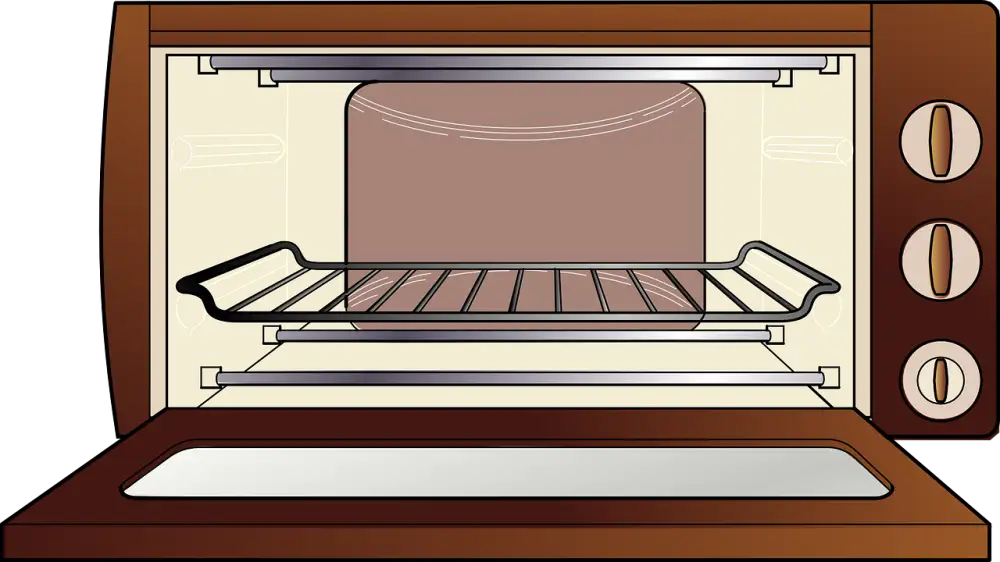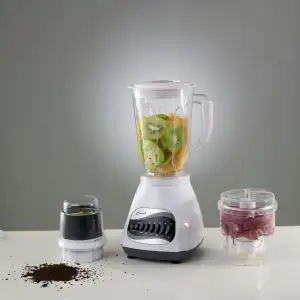Master the Art of Cooking with a Convection Oven: Your Ultimate Guide to Home Cooking Perfection

- Understanding the Basics of Convection Cooking
- Preheating Your Convection Oven
- Adjusting Cooking Time and Temperature
- Using the Convection Fan Effectively
- Proper Placement of Cookware in the Oven
- Tips for Achieving Perfectly Cooked Meals
- Cleaning and Maintenance of Your Convection Oven
- Troubleshooting Common Issues with Convection Ovens
Convection ovens have revolutionized the way we cook at home, providing us with a powerful tool to achieve culinary perfection. Unlike traditional ovens, convection ovens use a fan to circulate hot air evenly throughout the cooking chamber, resulting in faster and more even cooking. This technology not only reduces cooking time but also enhances flavors and textures. Whether you are a novice cook or an experienced chef, mastering the art of cooking with a convection oven will elevate your culinary skills to new heights. In this ultimate guide, we will explore the basics of convection cooking, provide tips for achieving perfectly cooked meals, and offer maintenance advice to keep your oven in top shape. Get ready to embark on a journey of culinary magic as we unlock the secrets of cooking perfection with a convection oven.
Understanding the Basics of Convection Cooking
Convection cooking is a method that utilizes the circulation of hot air to cook food evenly and efficiently. Unlike traditional ovens, convection ovens have a fan that helps distribute heat throughout the oven chamber. This constant movement of hot air ensures that your food cooks faster and more evenly.
The key principle behind convection cooking is that the hot air surrounds the food, allowing it to cook from all sides simultaneously. This results in quicker cooking times and a more even browning on the surface of your dishes.
By understanding how convection cooking works, you can take full advantage of this feature in your oven and achieve culinary perfection in your home-cooked meals.
Preheating Your Convection Oven
Preheating your convection oven is an essential step to ensure even cooking and optimal results. Unlike traditional ovens, convection ovens rely on a fan to circulate hot air, which means they require less time to preheat. To preheat your convection oven, simply set the desired temperature and allow it to heat up for about 5-10 minutes. This short preheating time ensures that the oven reaches the desired temperature quickly and efficiently. Always remember to check the manufacturer's instructions for specific preheating guidelines as different models may vary. Preheating your convection oven properly will guarantee that your food cooks evenly and achieves that perfect golden brown crust or tender interior you desire.
Adjusting Cooking Time and Temperature
One of the key advantages of cooking with a convection oven is its ability to cook food faster than traditional ovens. However, this also means that you need to make adjustments to your cooking time and temperature.
When using a convection oven, it is recommended to reduce the cooking temperature by about 25 degrees Fahrenheit compared to what the recipe suggests. This is because the hot air circulating in the oven cooks food more efficiently.
In terms of cooking time, you can typically reduce it by about 25% when using a convection oven. Keep an eye on your food as it cooks, and check for doneness earlier than you normally would. This will help prevent overcooking or drying out your dishes.
It's important to note that these are general guidelines, and every recipe may require slight adjustments based on personal preferences and the type of food being cooked. Experimentation and practice will help you find the perfect balance for your favorite recipes.
By adjusting the cooking time and temperature accordingly, you can achieve perfectly cooked meals with a convection oven. Remember to keep track of any modifications you make so that you can replicate your successful results in future cooking endeavors.
Using the Convection Fan Effectively
The convection fan in your oven is a powerful tool that can help you achieve perfectly cooked meals. When using the convection setting, make sure to keep the fan on throughout the cooking process. This will ensure even heat distribution and faster cooking times.
To maximize the effectiveness of the convection fan, avoid overcrowding the oven with too many dishes. Leave enough space for proper air circulation, allowing hot air to circulate around your food evenly. This will result in crispy exteriors and moist interiors.
Additionally, when using the convection setting, it is important to adjust your recipes accordingly. Lowering the temperature by about 25 degrees Fahrenheit is generally recommended to prevent overcooking or burning. Keep an eye on your food as it cooks, as it may require less time than traditional recipes suggest.
By utilizing the convection fan effectively, you can enhance flavors, achieve better browning, and create mouthwatering dishes that are cooked to perfection.
Proper Placement of Cookware in the Oven
Proper placement of cookware in the oven is crucial when cooking with a convection oven. To ensure even cooking and optimal results, it is important to follow these guidelines:
1. Allow for Adequate Airflow: Leave enough space between the cookware and the oven walls to allow hot air to circulate freely. This will prevent uneven cooking and ensure that all sides of your dish are cooked evenly.
2. Use Low-sided Cookware: Opt for low-sided pans or baking sheets whenever possible. This allows the hot air to reach the food more easily, resulting in faster and more even cooking.
3. Avoid Overcrowding: Do not overcrowd the oven with too many dishes at once. This can hinder proper airflow and lead to uneven cooking. If you have multiple dishes to cook, consider using multiple racks or staggering the cookware for better heat circulation.
4. Use Light-colored Cookware: Dark-colored or non-stick cookware tends to absorb more heat, which can result in faster browning or even burning of your food. Using light-colored cookware helps reflect heat and ensures more consistent cooking.
5. Position Cookware Properly: Place larger items such as roasts or whole chickens in the center of the oven, allowing space around them for hot air to circulate evenly. Smaller items like cookies or muffins should be placed towards the edges of the oven for best results.
By following these guidelines, you can maximize the efficiency of your convection oven and achieve perfectly cooked meals every time.
Tips for Achieving Perfectly Cooked Meals
1. Use the right cookware: Opt for light-colored, shallow pans that allow hot air to circulate evenly. Avoid using dark or non-stick pans as they can absorb heat and affect cooking times.
2. Reduce cooking time: Convection ovens cook food faster than traditional ovens, so reduce the cooking time by 25% or follow the manufacturer's guidelines.
3. Monitor food closely: Keep an eye on your dishes as they cook since convection ovens can sometimes lead to quicker browning. Adjust the temperature or cover with foil if needed.
4. Rotate pans: For even browning, rotate your pans halfway through cooking to ensure all sides of your dish are exposed to the circulating hot air.
5. Use lower temperatures: Lowering the temperature by about 25°F compared to a traditional oven will help prevent overcooking and ensure a moist and tender result.
6. Avoid overcrowding: Leave enough space between dishes to allow proper airflow. Overcrowding can hinder the circulation of hot air, resulting in unevenly cooked meals.
7. Experiment with recipes: Convection ovens offer versatility, so don't be afraid to try new recipes and adjust cooking times and temperatures accordingly for optimal results.
8. Check for doneness: Invest in a reliable meat thermometer to check if meats are cooked thoroughly. This will help avoid undercooking or overcooking, ensuring perfectly cooked meals every time.
By following these tips, you'll be well on your way to mastering the art of cooking with a convection oven and creating delicious meals that will impress family and friends alike!
Cleaning and Maintenance of Your Convection Oven
Cleaning and maintaining your convection oven is essential to ensure its optimal performance and longevity. Here are some tips to keep your oven in top shape:
1. Regularly wipe down the interior of the oven with a damp cloth or sponge to remove any food debris or spills. Avoid using abrasive cleaners that can damage the oven's surface.
2. Remove the racks and soak them in warm, soapy water. Scrub off any stubborn stains or residue before rinsing and drying them thoroughly.
3. Clean the convection fan by gently wiping it with a soft cloth or brush. Be careful not to bend or damage the fan blades.
4. For stubborn grease or baked-on food, use a non-abrasive oven cleaner specifically designed for convection ovens. Follow the manufacturer's instructions carefully and ensure proper ventilation during cleaning.
5. Clean the exterior of the oven with a mild detergent and water solution, avoiding harsh chemicals that can harm the finish.
6. Regularly check and clean the oven's vents to prevent blockages that can affect airflow and cooking performance.
7. Replace any worn-out gaskets or seals to maintain proper insulation and prevent heat loss.
Remember to always refer to your manufacturer's manual for specific cleaning instructions tailored to your convection oven model. By following these maintenance practices, you can enjoy many years of delicious meals cooked perfectly in your convection oven
Troubleshooting Common Issues with Convection Ovens
While convection ovens offer many benefits, they can sometimes present challenges. Here are some common issues you may encounter and how to troubleshoot them:
1. Uneven Cooking: If your food is cooking unevenly, it could be due to improper placement of cookware or overcrowding the oven. Ensure that there is enough space for air circulation around the food.
2. Burning Food: If your food is getting burnt on the top or bottom, try lowering the temperature or reducing the cooking time. You can also cover the dish with foil to prevent excessive browning.
3. Excessive Drying: Convection ovens tend to dry out food more quickly than conventional ovens. To combat this, use a lower temperature or shorter cooking time and consider adding moisture by using a water bath or covering dishes with a lid.
4. Fan Noise: It's normal for convection ovens to produce some noise due to the fan running continuously during operation. However, if you notice any unusual sounds like rattling or grinding, it may indicate a problem with the fan motor that needs professional attention.
5. Inaccurate Temperature: If you find that your convection oven's temperature is not accurate, use an oven thermometer to check its calibration. If necessary, adjust the temperature settings accordingly or consult a professional technician for recalibration.
Remember, troubleshooting these issues will help you achieve optimal results with your convection oven and ensure delightful culinary experiences in your home kitchen!
In conclusion, mastering the art of cooking with a convection oven can elevate your culinary skills to new heights. By understanding the basics of convection cooking, preheating the oven properly, and adjusting cooking time and temperature, you can achieve perfectly cooked meals every time. Utilizing the convection fan effectively and placing cookware correctly in the oven will further enhance your cooking results. Remember to follow our tips for achieving perfection and maintain your convection oven regularly for optimal performance. With practice and patience, you'll soon become a master chef in your own kitchen with the help of a convection oven. Happy cooking!
Published: 06. 01. 2024
Category: Home



